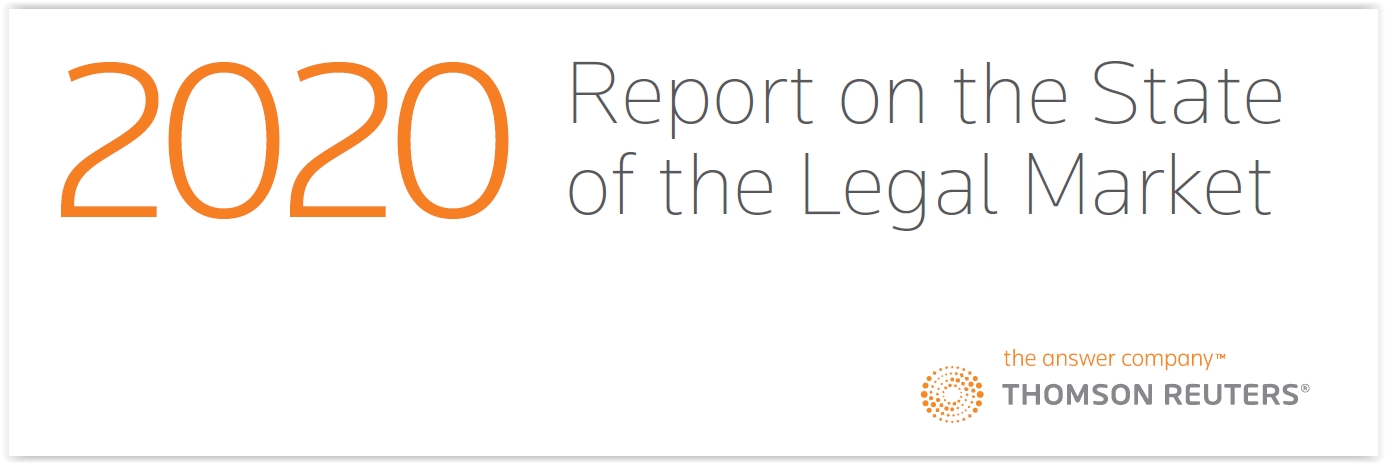2020 Highlights: Peer Monitor Insights on Law Firm Performance in the Pandemic

With an unprecedented and tumultuous year winding down, Legal Current is revisiting how Thomson Reuters thought-leadership reports tracked the progress of the law firm market during 2020. The year kicked off with the 2020 Report on the State of the Legal Market, one of several studies Thomson Reuters publishes throughout the year drawing on Peer Monitor data for insights into the performance of US large law firms.
Published annually by the Center on Ethics and the Legal Profession at Georgetown University Law Center and the Thomson Reuters Institute, the 2020 report emphasized fundamental shifts in the legal market as it moves toward a more client-centric model driven by innovation and flexibility, delivering improved efficiency, predictability and cost-effectiveness. The report noted the forces driving these changes – such as the increasing use of ALSPs and other non-law firm competitors, and the growth of the Big Four – and how innovative law firms are responding by investing in technologies and working in new ways to grow their business.
The report was published pre-COVID-19, but quarterly Peer Monitor Index reports showed how law firms were coming to grips with the pandemic. The Q1 2020 Peer Monitor Economic Index (PMI) report noted the large law firm market saw strong growth in demand and rates in the first quarter, which was not surprising given that the bulk of the social and economic impact of the outbreak in the US occurred during the very end of the quarter.
While the first quarter was fairly strong, the impact of COVID-19 with stay-at-home orders, court closures and broader economic slowdowns hit the large law firm market in full force in the second quarter. The Q2 2020 PMI report showed the PMI dropped by six points to 51, with demand for law firm services enduring its largest quarterly drop since 2009, down 5.9%.
The drop in demand moderated in the third quarter, and the Q3 2020 PMI report noted rates rose and firms took steps to cut costs, mainly by reducing headcount and expenditures. As ABA Journal explained: “Demand for legal services decreased for the last two quarters, but austerity measures implemented by law firms have them well positioned for profitability, according to a report issued this week.” Law.com also noted the rebound: “Big Law has still taken hits in demand in the last few months. But the picture has improved since the early summer.”
Additional perspective on how firms fared came in the 2020 Dynamic Law Firms Report, which examined the top quartile of law firms – as measured by overall firm profits, revenue per lawyer and average profit margin – to find what separated them from the rest of the pack. The report found that top-performing firms tend to have strong teams that enable higher leverage, that is, having a higher ratio of associates to partners, which helps control costs and increase profit margins. They also have stronger billing, budgeting and profitability analysis functions, and better management of productivity and lawyer headcount levels, which also help control costs.
Watch for the 2021 edition of the Report on the State of the Legal Market in January.